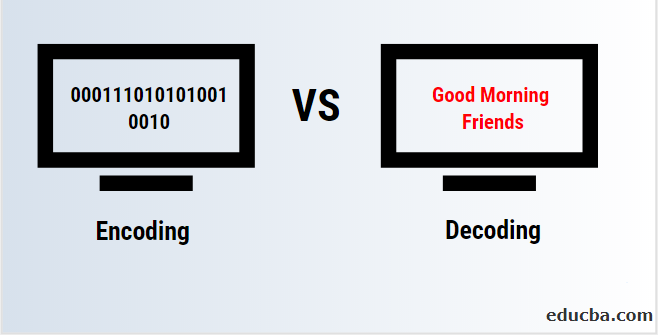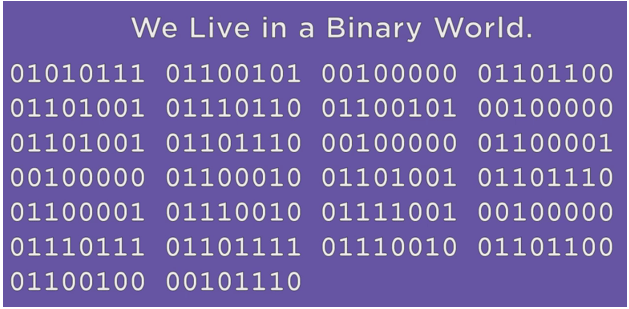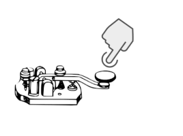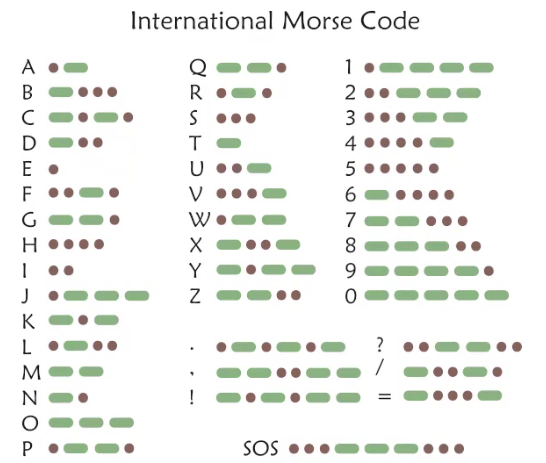
Difference Between Encoding and Decoding
Encoding vs Decoding is the comparison between the two processes that are related to data security and encryption or cryptographic mechanism. Encoding is implemented by applying some algorithm or computation in which the original data form is modified to a different form, whereas decoding is the process of decrypting the encoded data to its original form by applying the decoding computation or the algorithm. The encoding uses various algorithms to decrease the size of the file or the resource, whereas decoding is the process of reverting the encoded content of the file to its actual size. Certain specific standards, such as Base64, are widely used for the industry’s encoding and decoding process.
Head to Head Comparison between Encoding and Decoding (Infographics)
Below are the top 7 differences between Encoding vs Decoding
Key Differences between Encoding and Decoding
Let us discuss some of the major differences between Encoding vs Decoding.
Character Encoding
Character Encoding refers to a system by which characters are stored and thus represented within a given system. Today’s computing environments are binary systems which means that they operate on 1 and 0. The concept of character encoding was developed to answer the question, how do we organize the character belonging to our various languages within this world of 1 and 0.
For example:
The 1 and 0 you see here encode the string, We Live in a Binary World, using what is known as ASCII encoding.
For a real-life example of encoding:
Samuel Morse’s electrical telegraph system used a character encoding system known as Morse code.
This early system allowed data via the transmission of long and short signals of sounds or light, although typically sound was used. Most people visualize the telegraph key, the device upon pressing the key’s lever, an audio tone was sent to the receiving party. With the development of the key, the next logical question was, how do we send meaningful messages?
This leads to the development of Morse code.
As seen here, Morse code is a character encoding system that uses a combination of short and long audio tones, designated with dots and lines respectively, to transcode characters.
Including letters, numbers and some special characters. As an example, the English alphabet letter A, as in alpha, was transcoded as a short tone, followed by a long tone. A Morse code translator can be used to easily convert text to Morse code and vice versa, simplifying the decoding process.
Character Decoding
When the receiver heard the following, Boop, boop, he or she knew that the letter transmitted was an A. Boom! Character encoding at work. These days computing systems have taken over the bulk of worldwide communication. Base64 A binary-to-text encoding method that encodes binary data into an ASCII string.
Base64 Encoding and Decoding
Demo/Scenario:
Michael, your senior IR analyst, would like to ensure that you’re comfortable both decoding and encoding data in Base64. To test your abilities, she has provided a sample Base64 string that she would like you to decode.
Michael has given you a test!
- Decode:
UGx1cmFsc2lnaHQgaXMgYSBncmVhdCB0cmFpbmluZyByZyByZXNvdXJjZQ==
She would like to encoded data into Base64.
- Encode:
Incident Response Rocks!
Certutil for the Windows environment and you find that this tool can decode or encode files in Base64 format.
For usage syntax and notice, you simply need to provide the -decode option.
Along with the name of an input file and along with an output file. As such, you decide to put Michael’s Base64 encoded message into a file called decode_me.txt.
You can check your file’s status by attempting to type it, which simply provides the contents on the command line.
You can use Certutil to decode the contents, pass your input file, and decide to decode for your output file.
It looks as all the command has run successfully.
Just edit the command above type and decoded.txt file name and then generate the output’s actual message.
Your next step is to encode the string.
So you decide to put that into a file since that’s what Certutil would like. So you name the file encode_me.txt.
Once again, use type in order to check the contents of your file.
You type the below command and have successfully run the command.
But we can check by using the type command once again. And we run the command on the encoded file.
We just focus on the Base string provided.
Linux/Unix, so we have more control over things. If you run man echo, you will notice
Linux environment seems far more conducive to the task.
Encoding vs Decoding Comparison Table
Let us discuss the comparisons between Encoding vs Decoding.
| Basis of Comparison | Encoding | Decoding |
| Definition | Encoding is the technique of converting data among two types according to a set of protocols or a method. | Decoding is the inverse process of encoding. |
| Conversion type | Analog to Digital converter | Digital to Analog converter |
| API method | Window.atob() | Window.btoa() |
| Example | pqr to PQR (smaller case to uppercase) | PQR to pqr (uppercase to the smaller case) |
| Communication | Abstract the data while sending the message. This can be carried out using words, icons, photos, symbols, and sounds. | Decoding could be described with the receiver interpreting the message and simply visiting knowledge as to what the origin is usually interacting. |
| Media | Encoding is often utilized to decrease the size of audio and video data. | Decoding benefits a similar codec to rebuild the initial document coming from an encoded data file. |
| Real life example | A breakfast food organization ought to express their particular message for you to acquire their item. | They will produce an advertisement for the reasons, and you may observe or perhaps listen to it on television, radio or various other social networking. You can translate as well as be familiar with the message. |
Conclusion
- If encoding is the opposite, then the result and the decoding inputs will be swapped.
- This means that what would routinely be the specific lines on decoding (that are inputs) might certainly be the results from encoding.
- Their goal will be to create the binary encoding with the index whose input is usually high.
- The receiver or destination can be technically known as ‘decoding”.
- It is rather required that the message be clear, correct, and significantly developed so that listeners, audience, and people are not misinformed from the interpretation and purpose.
Recommended Articles
This has been a guide to Encoding vs Decoding. Here we also discuss the key differences with infographics and comparison table. You can also go through our other suggested articles to learn more –















